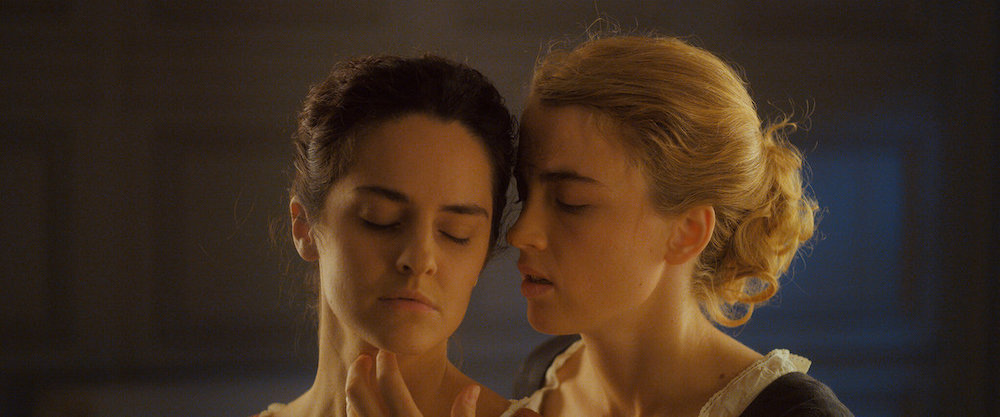
Ladies on fire!

Celine Sciamma’s sizzling new film, Portrait Of A Lady On Fire, doesn’t just pass the Bechdel test, it redefines it. This exquisite French film is a two hour virtually man-free visual feast with a laser female gaze that completely vaporises patriarchal convention.
The love story at its core is achingly beautiful for its simplicity and inherent impermanence, without the sense of calamity or victimisation that often comes with lesbian romance on screen.
Though both women are undoubtedly gorgeous, their attraction to each other feels intellectual, chemical, visceral. It’s not serving the usual voyeuristic agenda of showing two beautiful women having sex but rather eliciting empathy for two people who have a genuine affinity.
For all its sparseness and minimalism, the film is packed with subversive commentary.
In the opening scene we are introduced to the doe-eyed Marianne (Noemie Merlant), an artist who is instructing a class of young female students in late 1700s France. Marianne notices a painting sitting at the back of the room that had been hidden away; it is of a woman on a beach with her skirt alight. The students implore Marianne to share the story behind the painting. And so we are thrown in to flashback.
In one of only a handful of scenes that includes any men we find Marianne being rowed across rough seas to a remote island in Brittany. The male crew are less than galant, watching Marianne swim after a crate that has washed overboard then depositing her indifferently on the island. It’s a scene that establishes the gender politics of the film.
Marianne has been commissioned by a Comtesse (Valeria Golino) to paint a portrait of her daughter, Heloise (Adele Haenel) who is betrothed to a Milanese nobleman. The portrait is a gift but also effectively an acceptance of marriage.
Marianne and Heloise fall in love, brought together by the painting of a portrait that will ultimately tear them apart. Despite his absence and near anonymity, the nobleman exerts absolute control over the fate of the two women.
It takes a long time and a lot of teasing before the women consummate their feelings for each other, but that only draws us into their infatuation.

Meanwhile, in a sideline plot, Sophie (Luana Bajrami) the young, unmarried house servant, reveals that she is pregnant. After some bizarre home remedies fail, the three women seek out a local “medicine woman” who performs an abortion on Sophie.
The entire episode is given a fair bit of film time and explores ideas around unwanted pregnancy, female sexuality, and the inherent solidarity among women.
There is a particularly stunning scene where the three friends attend a sort of coven. A large group of women of all ages assemble around a fire and then perform a chant that is utterly transcendental.
It truly is a rich and exquisite film; intelligent, sensitive, uniquely female with a superb script and surprising moments of humour.
One of the stand-out lines is uttered by Heloise when she and Marianne first begin to explore their attraction: “Do all lovers feel like they are inventing something?”
This film says so much so quietly.









